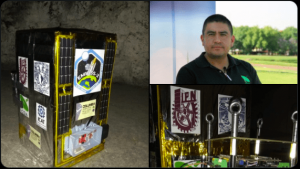A week and a half ago, Mexico was jolted by one of the worst earthquakes in recent history.
The tremor, which registered a powerful 8.2, which lasted three minutes and 40 seconds, also jolted the memories of those Mexicans who lived through El Grande (the Big One) 32 years ago.
On Sept. 19, 1985, a devastating magnitude 8.1 earthquake destroyed entire blocks of Mexico City, leaving more than 10,000 dead, according to official government figures (although the Mexican National Seismological Center put the figure at 45,000) and leaving at least 5,000 people missing.
More than 100,000 people were left injured and/or homeless.
At 7:19 a.m., just as families were gathering at their breakfast tables and some long-distance commuters were heading off to work, the quake struck, lasting somewhere between 90 seconds and 180 seconds, depending on the source you consult.
Many structures that were left damaged but still intact were soon toppled by the 7.5-magnitude aftershock that followed one day later.
The consequences of the Big One were felt throughout the Federal District, and in places as far away as Jalisco, Oaxaca, Guerrero and Michoacán, but the most effected neighborhoods were Roma, Condesa and the Historic Center.
One by one, landmarks and well-known buildings collapsed under their own weight on their lakebed sediment foundations as the combination S wave (sideways) and P waves (up and down) tremor ripped apart infrastructure and foundation pillars.
In a matter of minutes, the prestigious Regis, Del Prado and Hilton Hotels in Mexico City’s downtown were reduced to a pile of rubble.
Multifamily housing projects such as the Edificio Nuevo León in Tlaltelolco and the Juárez condominium complex in Doctores buried hundreds of people alive.
According to government statistics, a total of 53,000 buildings were affected by the earthquake, and 757 had to be demolished.
One of the most unforgettable government institutions to fall was the main tower of Hospital Juárez, one of the oldest medical institutions in the country.
The 12-story, steel-frame structure, which had an 80 percent bed occupancy at the time, collapsed like a house of cards, trapping doctors, nurses and
and patients under the debris.
For five days, rescue workers struggled to save the entombed victims, many of whom died after the fact, due to the long-term consequences of dehydration and injuries.
Amazingly, all the newborn babies in the hospital’s nursery survived, pulled from the wreckage alive, while most of their mothers died in the quake.
For months after the Big One, the stench of rotting flesh impregnated parts of the city as the slow and tedious process of unearthing the remains of victims progressed.
Many of those remains were so badly disfigured that they could not be identified and were cast into mass public graves.
A full 32 years later, the horrific images of the 1985 quake are still very much ingrained in the collective memory of those who lived through it.
Mexico City and its people were eternally changed on that fateful day, and the communal fear that the next Big One will strike at any time is very much on the minds of a nation of survivors of the shaking earth.
Thérèse Margolis can be reached at [email protected].










